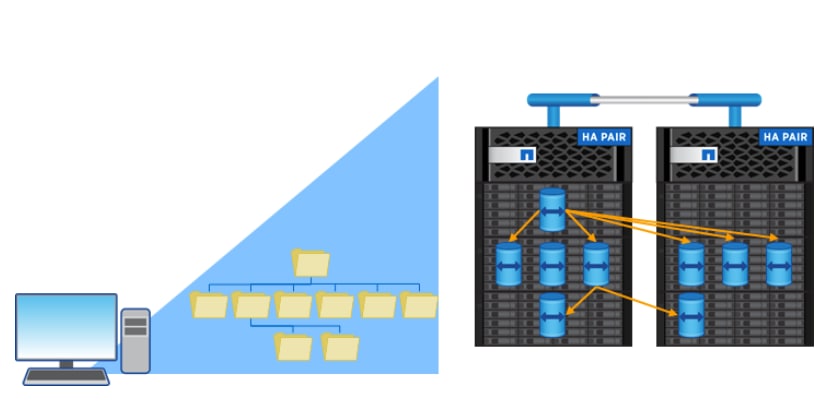It’s a Small, Small Data World: How NetApp FlexCache Makes It Smaller


Chris Hurley
If you’ve ever been to Disneyworld, you’ve likely gotten the “It’s A Small World” song stuck in your head. (If not, I bet it is now.) I always associate it with the spinning teacup ride. The premise of the song is that we’re not alone where we live – that we share the world with many. (Fun fact: The song was actually inspired by the Cuban Missile Crisis)
With networks approaching 100GB speeds, the Internet and global trade agreements, that song has never rung truer. And with the need to do business across the globe comes the need to be able to effectively share data.
What if you could use your ONTAP cluster to present your data for reading and writing in multiple places around the world without sacrificing performance – in other words, a truly global namespace?
ONTAP 9.5 makes that possible with the re-introduction of FlexCache!
A small world, indeed.
What’s a global namespace?
The term “global namespace” can mean a couple of things.- Your whole data structure is under one "root" volume and the data is actually stored all over the place. But it's all under one directory tree with soft links, symlinks, junction points, widelinks, and a whole bevy of tricks.
- Your dataset is available in multiple places in a read-write configuration (caching) and no matter where you are in the company's network (via VPN, overseas, in a remote office, at the datacenter) you get a similar response time to that dataset and it is all read-writable.
 Junction paths as a global namespace allowed users to find their data in the same location. For Windows/SMB shares, this simply meant having fewer drive letters to connect to and navigate, but for NFS clients using automounter, junction paths made life significantly easier for end users (and, by the transitive property, easier for storage administrators, too).
Junction paths as a global namespace allowed users to find their data in the same location. For Windows/SMB shares, this simply meant having fewer drive letters to connect to and navigate, but for NFS clients using automounter, junction paths made life significantly easier for end users (and, by the transitive property, easier for storage administrators, too).
While junction paths could solve problems isolated to a single physical location, it did not do much to solve problems with sharing data across sites. In an increasingly global IT world replete with devices that are constantly feeding data into storage (think mobile devices, IoT, etc.), data has to be accessible, predictable and consistently fast, regardless of where it’s being used.
With factors external to storage (such as WAN latencies), this challenge is being tackled by way of a locally accessible cache built on a FlexGroup volume that connects back to one or more origin volumes in ONTAP clusters that can be local or across the ocean.
In addition, the ONTAP clusters can be FAS, AFF or even software-defined ONTAP running on commodity hardware.

What FlexCache brings to the table
For ONTAP to provide a 100% uniform performance experience, FlexCache provides local copies of data (but only the data you are using) into a cache. This “cache-warming” then leverages global locking capabilities and provides proper handling of file conflicts across sites. A FlexCache also removes the need to manually replicate data to multiple sites – instead, client workloads drive which data is chosen to replicate to the cache, providing the most bang for your storage buck. This is backed by the capacity-based FlexCache license, where you only pay for the data you are actually using in the cache.Where would a FlexCache help me most?
There are multiple use cases that can benefit from a global namespace that acts as a read-write cache. These include, but are not limited to:- AI/Machine Learning/Deep Learning
- Electronic Design Automation (EDA)
- Media rendering workloads
- Code distribution/source code repositories
- Home directories
If you think your workload is a good fit for FlexCache or you simply have more questions, email us at ng-flexcache-info@netapp.com.
Chris Hurley
Chris works as the NetApp Technical Marketing Engineer for FlexCache and all things NAS. He is just as comfortable in Linux as he is in Windows which gives him a unique perspective in the industry. He has 8 years at NetApp in the NAS space and has multiple years of NAS and IT security experience in the field. Problem solving and architecture are his strong points and you’ll often see him diving into a packet trace or code to get the best solution.